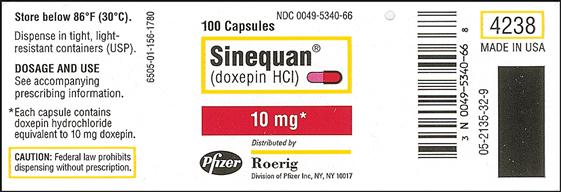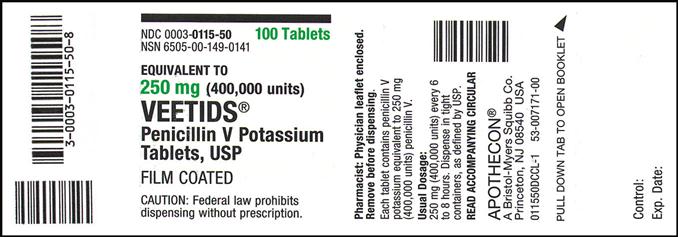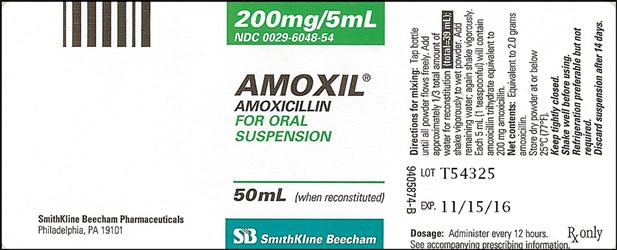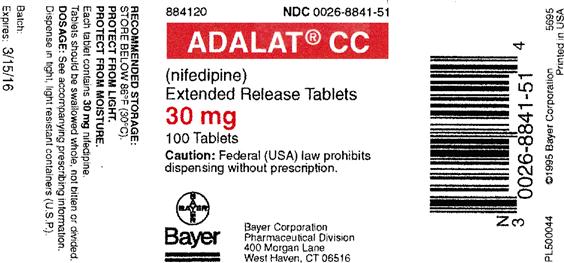INTERPRETATION OF DRUG LABELS, DRUG ORDERS, BAR CODES, MAR AND eMAR, AUTOMATION OF MEDICATION DISPENSING ADMINISTRATION, AND ABBREVIATIONS
Objectives
• Give examples of drugs with “look-alike” drug names.
• Name the components of a drug order.
• Explain the computer-based medication administration system.
• Explain the use of the bar code for unit dose drug.
• Identify drug information for charting.
INTERPRETATION OF DRUG LABELS
Pharmaceutical companies label drugs with their brand name of the drug in large letters and the generic name in smaller letters. The form of the drug (tablet, capsule, liquid, or powder) and dosage are printed on the drug label.
Many of the calculation problems in this book use drug labels. By using drug labels, the student can practice solving drug problems that are applicable to clinical practice. The student should know what information is on a drug label and how this information is used in drug calculations. All drug labels provide seven basic items of data: (1) brand (trade) name, (2) generic name, (3) dosage, (4) form of the drug, (5) expiration date, (6) lot number, and (7) name of the manufacturer.
EXAMPLE
DRUG LABEL
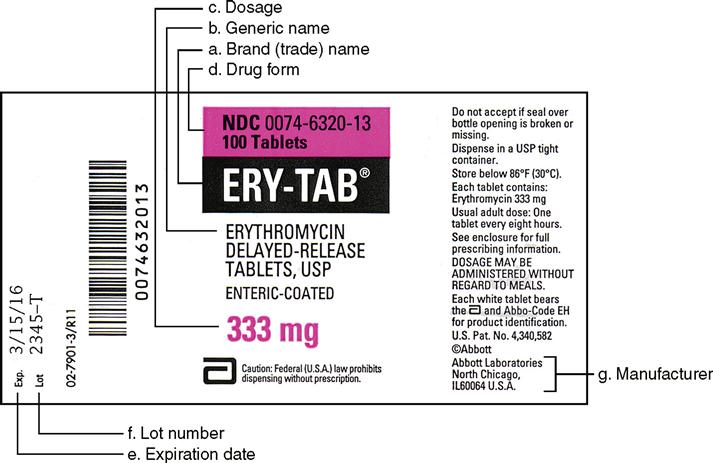
c. The dosage strength is the drug dose per drug form (tablet, capsule, liquid) as stated on the label.
d. The form of the drug (tablet, capsule, liquid) relates to the dosage strength.
g. The manufacturer is the pharmaceutical company that produces the brand name drug.
Examples of drug labels are given, and practice problems for reading drug labels follow the examples.
EXAMPLE
ORAL DRUG (SOLID FORM)
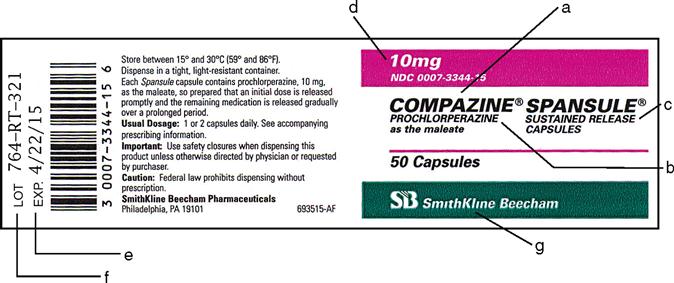
a. Brand (trade) name is Compazine.
b. Generic name is prochlorperazine.
c. Drug form is a sustained-release capsule (SR capsule).
d. Dosage is 10 mg per capsule.
e. Expiration date is 4/22/15 (after this date, the drug should be discarded).
EXAMPLE
ORAL DRUG (LIQUID FORM)
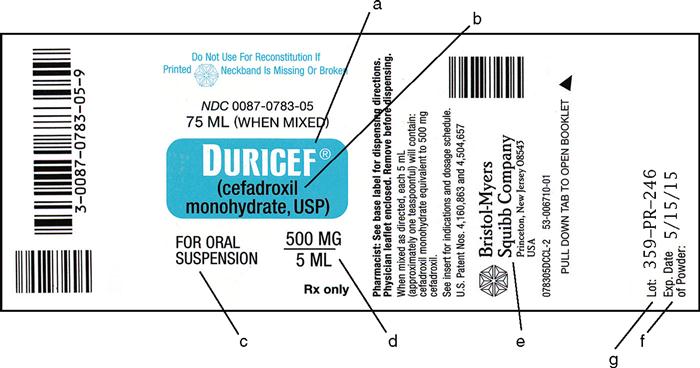
EXAMPLE
INJECTABLE DRUG
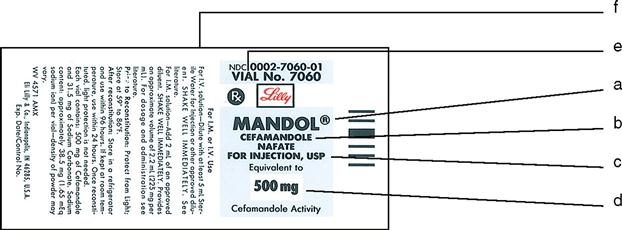
b. Generic name is cefamandole nafate.
c. Drug form is drug powder that must be reconstituted in a liquid form for use (circular paper).
d. Dosage is 500 mg drug powder.
Military Time versus Traditional (Universal) Time
Many nursing settings currently are using military time, a 24-hour clock, when administering medications and treatments. For example, in military time, 3 AM is 0300 and 3 PM is 1500; 7:15 AM is 0715 and 7:30 PM is 1930. The AM hours are the same as on the traditional clock, and for hours after 12 noon, 12 is added to the PM hours; see Figure 3-1. The use of the 24-hour clock reduces drug administration errors.
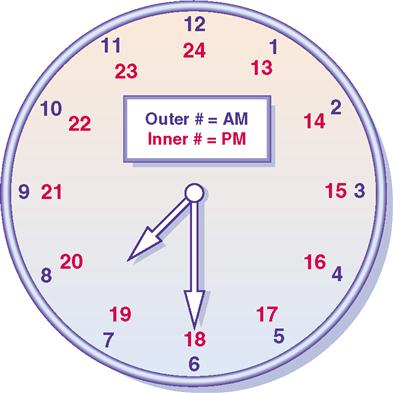
DRUG DIFFERENTIATION
Some drugs with similar names, such as quinine and quinidine, have different chemical drug structures. Extreme care must be exercised when administering drugs that “look alike” or have similar spellings.
EXAMPLES
PERCOCET
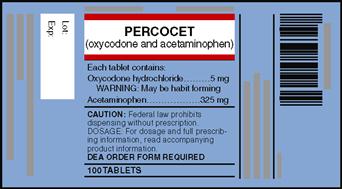
PERCODAN

Percocet contains oxycodone and acetaminophen, whereas Percodan contains oxycodone and aspirin. A patient may be allergic to aspirin or should not take aspirin; therefore it is important that the patient be given Percocet. Read the drug labels carefully.
EXAMPLES
HYDROXYZINE AND HYDRALAZINE
Hydroxyzine is an antianxiety drug, and hydralazine is an antihypertensive drug.
EXAMPLES
QUINIDINE AND QUININE
Quinidine sulfate is an antidysrhythmic drug, and quinine sulfate is an antimalarial drug.
Drug Orders
Medication orders may be prescribed and written by a physician (MD), an osteopathic physician (DO), a dentist (DDS), a podiatrist (DPM), nurse practitioner (NP), or a licensed health care provider (HCP). Drug prescriptions in private practice or in clinics are written on a small prescription pad and are filled by a pharmacist at a drug store or hospital (Figure 3-2). For hospitalized patients, the drug orders may be written on a doctor’s order sheet and signed by the physician or licensed HCP (Figure 3-3), or a computerized drug order system may be used. If the order is given by telephone (TO), the order must be cosigned by the physician within 24 hours. Most health care institutions have policies concerning verbal or telephone drug orders. The nurse must know and follow the institution’s policy.

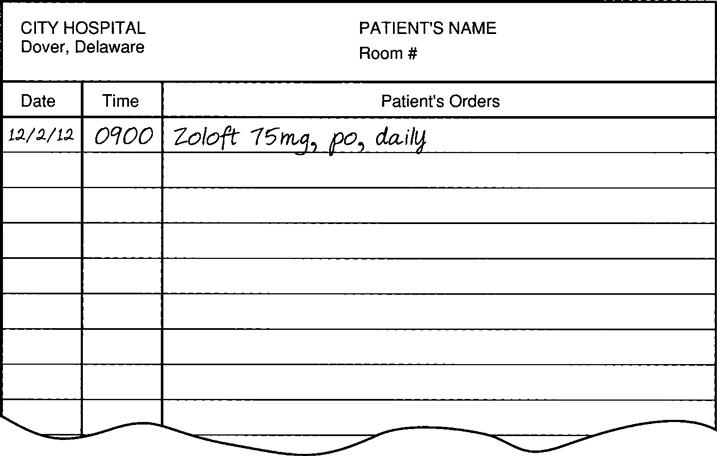
The basic components of a drug order are (1) date and time the order was written, (2) drug name, (3) drug dosage, (4) route of administration, (5) frequency of administration, and (6) physician’s or HCP signature. It is the nurse’s responsibility to follow the physician’s or HCP’s order, but if any one of these components is missing, the drug order is incomplete and cannot be carried out. If the order is illegible, is missing a component, or calls for an inappropriate drug or dosage, clarification must be obtained before the order is carried out.
Examples of drug orders and their interpretation are as follows:
| 6/3/13 | 9:10A | Digoxin 0.25 mg, po, daily (give 0.25 mg of digoxin by mouth daily) |
| Ibuprofen 400 mg, po, q4h, PRN (give 400 mg of ibuprofen by mouth every 4 hours as needed) | ||
| Cefadyl 500 mg, IM, q6h (give 500 mg of Cefadyl intramuscularly every 6 hours) | ||
| Prednisone 5 mg, po, q8h × 5 days (give 5 mg of prednisone by mouth every 8 hours for 5 days) |
Stay updated, free articles. Join our Telegram channel

Full access? Get Clinical Tree



 I INTERPRETATION OF DRUG LABELS
I INTERPRETATION OF DRUG LABELS